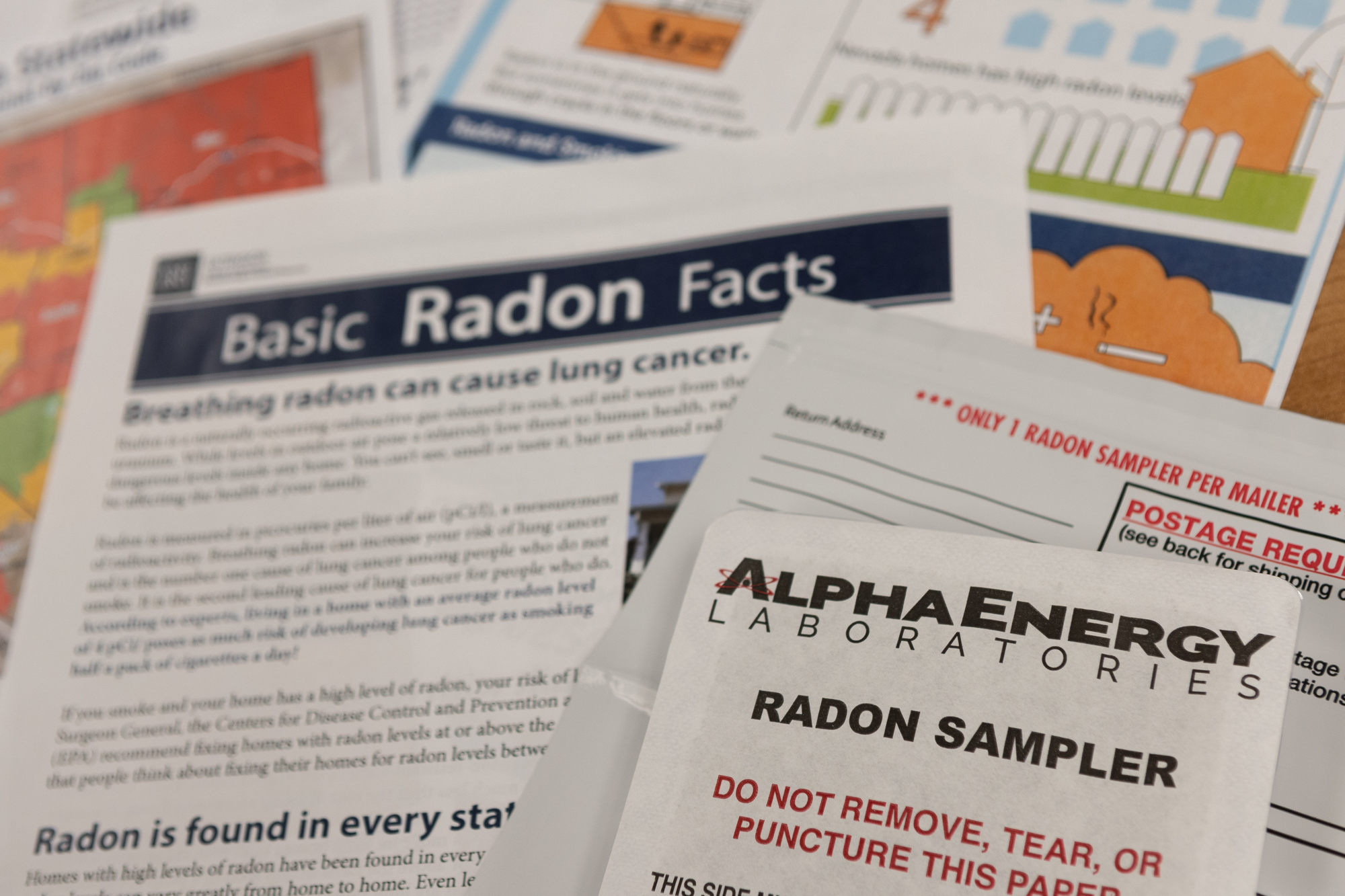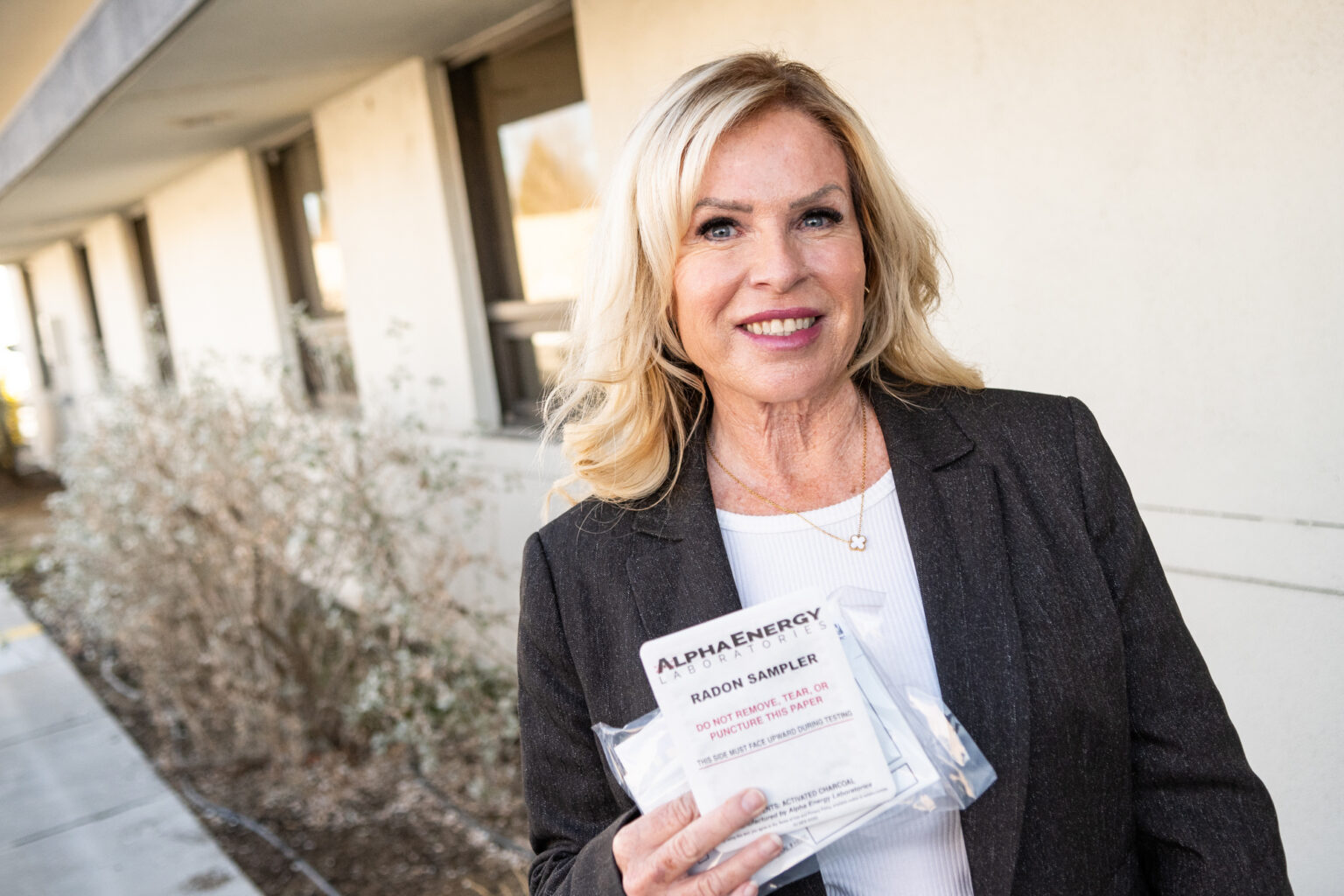Radon exposure can be deadly. Most Nevadans don’t know how prevalent it is

Good morning, and welcome to the Indy Environment newsletter. I’m Amy Alonzo, the environment reporter for The Indy.
With a chilly start to the new year, I’ve found myself leaving the house less than usual as the winter doldrums set in.
I hunker down each winter, enjoying an excuse to take a break from the frantic pace I keep each spring, summer and fall when I feel compelled to spend as much time as possible outdoors. But all this time inside could have some unintended negative health consequences.
Radon is a silent killer prevalent across Nevada, and many households test higher than the federal government’s recommended level. I tested my house for radon six years ago, then forgot about it until I received an email this month encouraging people to test their homes. I plan on picking up a test this month, and I encourage other Nevadans to do the same.
As always, we want to hear from readers. Let us know what you’re seeing on the ground and how policies are affecting you. Email tips to me at [email protected].
To get this newsletter in your inbox, subscribe here.

You can’t see radon. Or taste it or smell it. But you can die from it.
Exposure to radon, which comes from the ground and is naturally occurring, kills about 21,000 people nationally each year.
It is the leading cause of lung cancer among people who have never smoked and kills more people than secondhand smoke, drunk driving and house fires combined, according to the Environmental Protection Agency (EPA).
And in Nevada, more than a quarter of houses tested for radon showed higher than safe levels for the odorless gas, nearly four times the national average.
But deaths from radon exposure are preventable, according to Chris Kelly, Nevada radon education program officer for UNR. Simple tests can detect radon levels in businesses, homes and other areas where people spend significant amounts of time indoors.
“It’s the only cancer that’s 100 percent preventable, because if a person’s not a smoker and they get lung cancer, then it most likely comes from radon,” she said. “And it’s easy to test for radon and it’s easy to mitigate.”
But radon levels and mitigation are largely unregulated. There are no federal regulations governing acceptable levels for schools or other public buildings, only nonbinding guidelines and recommendations issued by the EPA.
And other than requiring sellers to disclose known radon levels when selling a property, Nevada lawmakers have largely ignored more stringent radon regulations as well.
The state doesn’t require testing in day care centers and schools, as some other states do, and it doesn’t require radon-resistant new construction. It also doesn’t require a public education program or have any other mitigation laws adopted by other states.
When she talks to lawmakers and local officials, they are generally “shocked we don’t have any regulations, but none of them want to make it their platform,” Kelly said. “There’s no reason for a child to sit year after year in a classroom with high radon levels and the state doesn’t require the school to be tested.”
Like smoking half a pack per day
Nevada has the most surface uranium of any state in the nation, according to the United States Geological Survey, and uranium naturally produces radon as it decays. As radon breaks down, it produces radioactive particles that can embed themselves in peoples’ airways, potentially leading to lung cancer, according to the World Health Organization.
And while only about 11 percent of Americans smoke, about 15 percent of Nevadans smoke. Smokers are 25 times more at risk from radon exposure than nonsmokers because of the synergistic effects of smoking and radon exposure.
Smokers or not, when it comes to testing for lung cancer, Nevada ranks near the bottom.
The state is 47th nationally for preventative screenings, with only about 1 percent of high-risk Nevadans getting screened each year, well below the national rate of 4.5 percent.
In 2022, an estimated 2,030 Nevadans were diagnosed with lung cancer and nearly 1,200 people died from the disease.
“Lung cancer claims more lives each year than any other form of cancer … and posing a higher risk to Nevadans compared to the national average,” Kelly said.
Testing houses and businesses is the first step toward preventing radon-caused lung cancer. Through February, free test kits are being offered statewide by the University of Nevada, Reno Extension’s Nevada Radon Education Program in recognition of National Radon Action Month. Since the program started in 2007, more than 31,000 homes have been tested.
Tested houses show some alarming numbers — more than a quarter of those tested have radon levels at or above those recommended by the EPA, the 12th highest in the nation.
The U.S. surgeon general suggests testing for radon every two years. While exposure to any amount of radon can be risky, the EPA recommends mitigation if the radon concentration is 4 picocuries per liter of air (pCi/L). A pCi is a measurement of the rate at which radon decays, emitting particles that can embed themselves in peoples’ airways. At a radon concentration level of 4 pCi/L, there will be nearly 12,700 radioactive disintegrations of radon particles in one liter of air over the course of a 24-hour period.
Regularly breathing air at that level is the equivalent of smoking a half pack of cigarettes per day — or higher.
Mitigation measures include increasing underfloor ventilation, installing a radon sump pump in the basement, improving ventilation and adding fans. Such mitigation measures can more than halve indoor radon levels.
Nevada’s average indoor radon level is 3.61 pCi/L, although many properties test much higher than that. Kelly receives quarterly updates on the results of radon testing in the state, and some reported radon levels are often in the teens or much higher.
In 2015, a Reno property was found with radon levels of 195 pCi/L, and last year, a Spanish Springs property tested at 152 pCi/L.
And while the highest numbers in the state have been in Northern Nevada, Kelly is also seeing an increase across Southern Nevada.
“As we are doing more testing in Southern Nevada, the numbers are coming up,” she said.

Here’s what else I’m watching this week:
The Deseret News dives into the commonalities between the incredibly saline Great Salt Lake and Salton Sea, including the smell of rotten eggs.
Could the Bureau of Land Management’s Public Lands Rule help protect wildlife corridors? Inside Climate News examines both sides of the argument.
Will California do what Nevada didn’t? The San Francisco Chronicle looks at extreme heat protections proposed for California’s indoor workers.
Inside Climate News reports on how Arizona is grappling with Colorado River water shortages.
